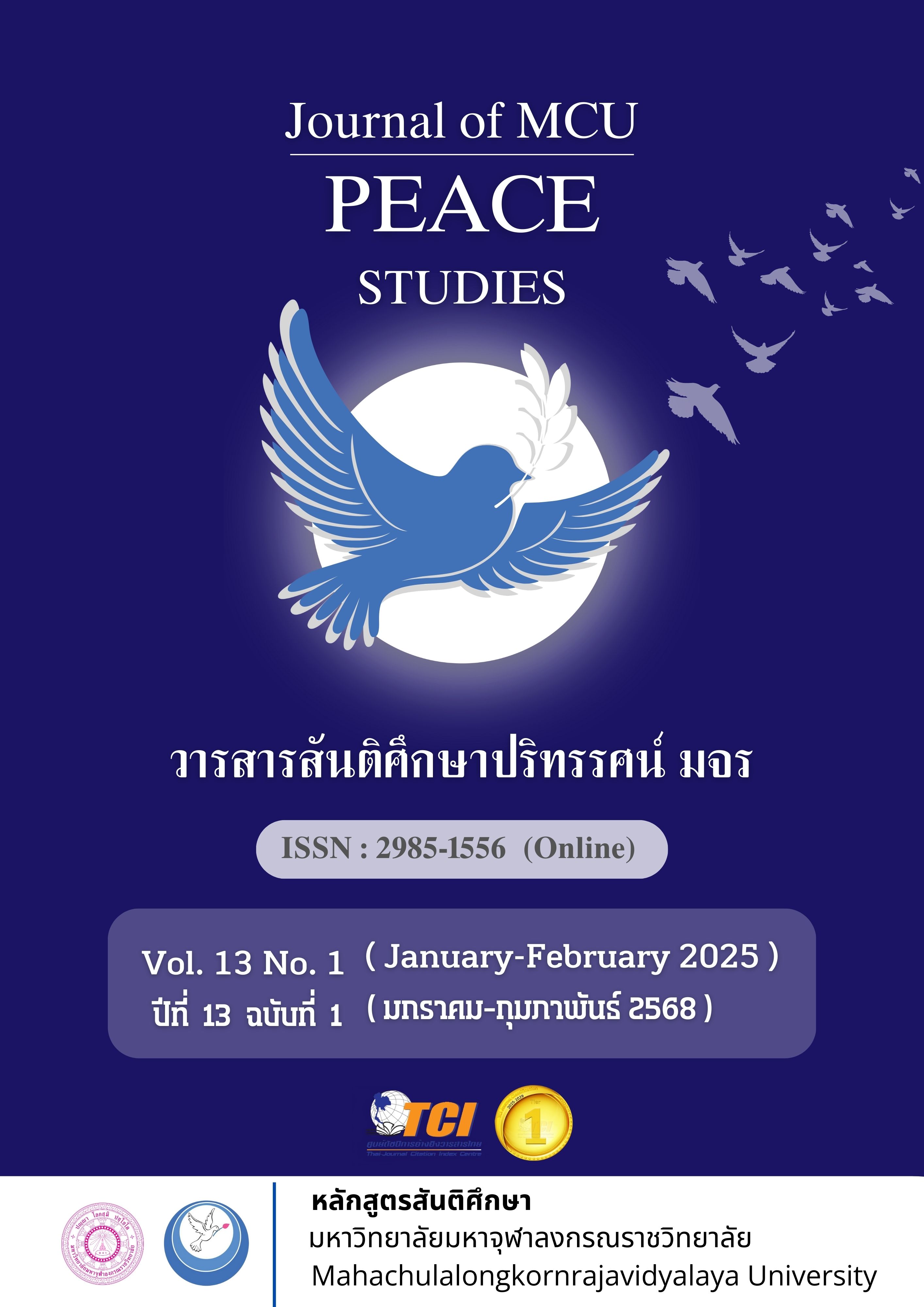Change Management Model for Addressing the Digital Divide in Private Educational Institutions during the Transition Era
Main Article Content
Abstract
The study had the following objectives: 1) to analyze the digital divide in private educational institutions during the transition era; 2) to develop a structural equation model for the digital divide; and 3) to create and evaluate a change management model for addressing the digital divide. The study utilized content analysis as the primary statistical method. A questionnaire was used as the research tool. Factor analysis on the digital divide in private educational institutions during the transition era was conducted using mean, standard deviation, and confirmatory factor analysis.
The study revealed the following results: 1) Through the analysis of the digital divide in private educational institutions, the researcher identified six main factors and 30 sub-factors, including vision, leadership, management, personnel development, the development of a digital organizational culture, and the use of information technology and communication. 2) The results of the confirmatory factor analysis indicate that the developed model aligns well with the empirical data, as various indices meet the standard criteria, such as RMSEA = 0.002 and p-value = 0.427. 3) The model was rated highly in terms of propriety, feasibility, accuracy, and utility, particularly in areas such as the use of information technology, leadership, and the development of a digital organizational culture, which received the highest scores. The study provides important guidelines for managing the digital divide and enhancing the quality of education in private educational institutions during the digital era.
Article Details

This work is licensed under a Creative Commons Attribution-NonCommercial-NoDerivatives 4.0 International License.
Views and opinions expressed in the articles published by The Journal of MCU Peace Studies, are of responsibility by such authors but not the editors and do not necessarily reflect those of the editors.
References
Aphakhorn, P. (2020). The Digital Divide: A Thorn in the Side of Online Learning. Retrieved May 3, 2023, from https://www.isranews.org/article/isranews-article/88963-pansak.html
Joreskog, K. G., & Sorbom, D. (1989). Advances in Factor Analysis and Structural Equation Models. Massachusetts: ABT Books.
Kaiser, H. F. (1974). An Index of Factorial Simplicity. Psychometrika, 39(1), 31-36.
Laorat, C. (2021). Success Factors for Transforming into a Digital Organization. Journal of Information Science, 39(4), 81-94.
Munmart, J. et al. (2021). The Use of Information Technology for the Administration of Educational Institutions in the Digital Transformation Era. Quality of Life and Law Journal, 17(2), 21-32.
Najampa, T., Somngbandit, A., & Srisopha, Y. (2021). The Development of Educational Management Model in the Digital Era for Secondary School in the Central Region under the Office of the Basic Education Commission. (Doctoral Dissertation). Srinakharinwirot University. Bangkok.
Office of the Private Education Commission. (2023). Private Education Development Plan 2023 -2027. Bangkok: Policy and Planning Group, Office of the Private Education Commission.
Pansri, T., & Chomtohsuwan, T. (2019). Digital Life Inequality in Thailand. Journal of Demography, 35(2), 44-63.
Phokham, T. (2021). A Model of Pracharath School Management in the Digital Age under the Office of Basic Education Commission. The Journal of Research and Academics, 4(1), 177-188.
Thawinkarn, S. (2021). Digital Leadership. Khon Kaen: Khon Kaen University Learning Center.
TSIS Team. (2020). Sample Size Determination Using a Predefined Table. Retrieved May 3, 2023, from https://www.thetsis.com/post/research-tips-sampling
Yuyeun, J. (2022). A Model for Change Management of Learning Management in Digital Age of Wat Nawong School, Pathumtani Primary Educational Service Area Office 1. Journal of MCU Nakhondhat, 9(7), 165-176.

